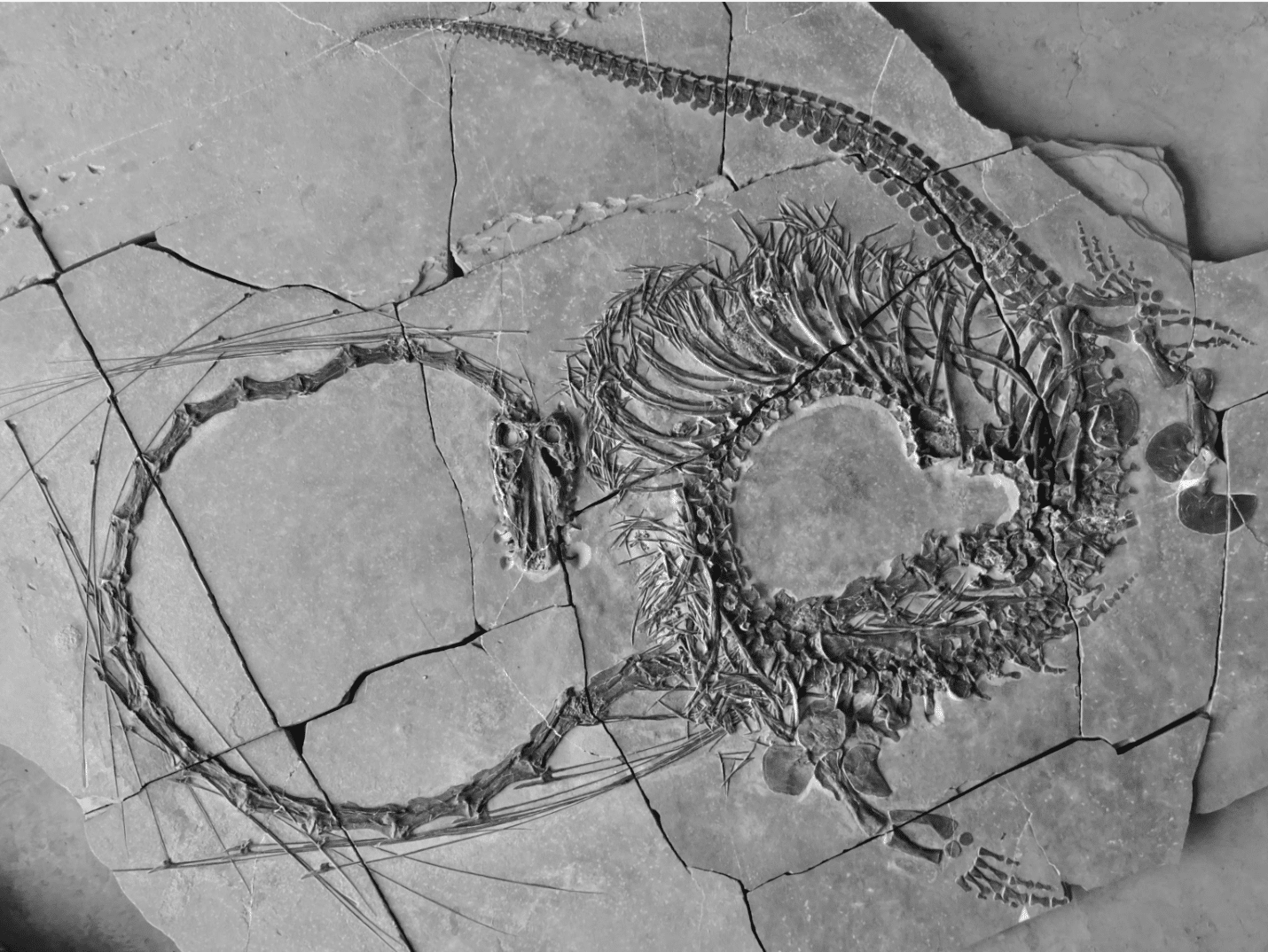Scientists in Scotland have revealed a remarkable discovery of a “very strange” 240-million-year-old “Chinese dragon” fossil.
The international team from National Museums Scotland revealed their discovery — found in Guizhou Province in southern China — of the Dinocephalosaurus orientalis, a 5-meter-long aquatic reptile from the Triassic period dating back an estimated 240 million years.
“With 32 separate neck vertebrae Dinocephalosaurus orientalis had an extraordinarily long neck that draws comparison with that of Tanystropheus hydroides, another strange marine reptile from the Middle Triassic of both Europe and China,” scientists said announcing the discovery.
“Both reptiles were of similar size and have several features of the skull in common, including a fish-trap type of dentition,” officials continued. “However, Dinocephalosaurus is unique in possessing many more vertebrae both in the neck and in the torso, giving the animal a much more snake-like appearance.”
Scientists say the reptile was “clearly very well adapted to an oceanic lifestyle,” as indicated by the flippered limbs and “exquisitely preserved” fishes in its stomach region.
“Despite superficial similarities, Dinocephalosaurus was not closely related to the famous long-necked plesiosaurs that only evolved around 40 million years later and which inspired the myth of the Loch Ness Monster.”
The reptile was originally identified in 2003, but this most recent discovery of additional, more complete specimens has allowed scientists to depict the bizarre long-necked creature in full for the very first time.
“It is yet one more example of the weird and wonderful world of the Triassic that continues to baffle palaeontologists, said Dr. Nick Fraser, Keeper of Natural Sciences at National Museums Scotland in the statement announcing the discovery. “We are certain that it will capture imaginations across the globe due to its striking appearance, reminiscent of the long and snake-like, mythical Chinese Dragon.”


















